In Newtown, Connecticut stands the ruins of a stately psychiatric hospital. The Fairfield Hills State Hospital opened in 1931, with brick Georgian style buildings spread across 770 bucolic acres. In its prime, the campus would have had the architectural feel of an Ivy League campus, but hosting 4,000 patients within. Like a handful of abandoned hospitals in the New York City area like Kings Park and Letchworth Village, Fairfield Hills State Hospital has become accessible to the public since its conversion into the town’s municipal center.
Fairfield Hills State Hospital closed in 1995 and the Town of Newtown purchased the property in 2004. In 2009, the town started converting some of the buildings for administrative use, with additional plans to add recreational and cultural facilities. Today, the Town of Newtown and other organizations occupy a few buildings within the former campus that is now known as the Newtown Municipal Center. Bridgeport Hall, which once contained the food services of Fairfield Hills State Hospital, serves as the offices of the town, including the city’s tax office, the Board of Education, Planning and Zoning departments, and other functions. But some of the largest buildings loom in their abandoned state behind fencing.
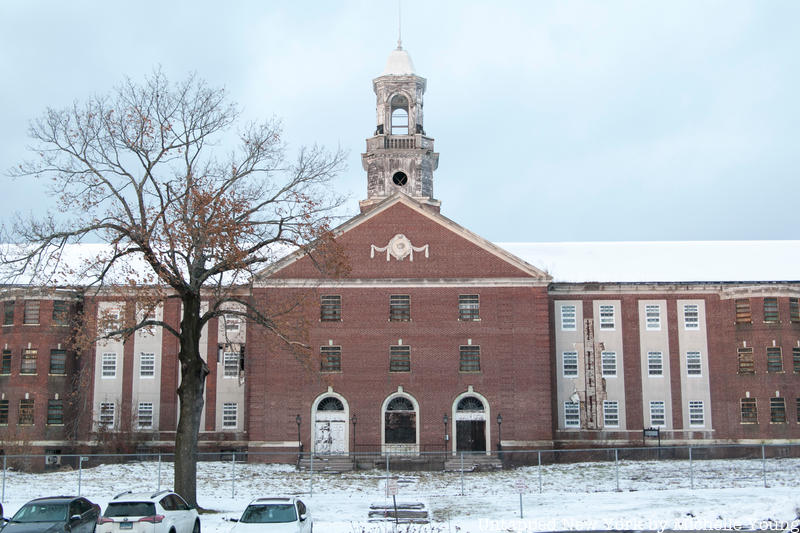 Kent House
Kent House
Across from Bridgeport Hall is the former Kent House, used for patient treatment and housing. The three-story building with three connected wings was one of the largest in the facility. Along the front facade, behind fencing, are three architectural cupolas now sitting on the ground that once belonged to Shelton House.
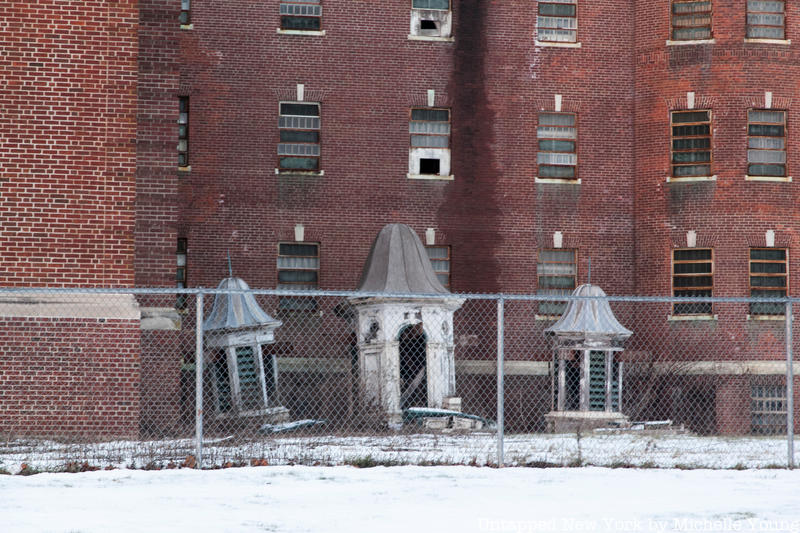
In one of the doctors’ houses along Washington Square is home to the Newtown Parent Connection, an organization that supports families dealing with the substance abuse of a loved one. Just behind it is the Newtown Volunteer Ambulance Corps, located in a new building designed in the architectural style of the campus.
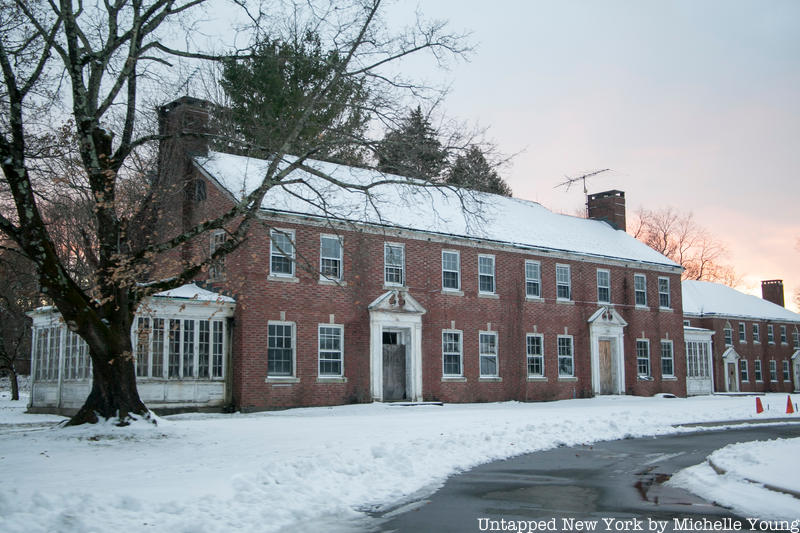 Former doctors’ housing
Former doctors’ housing
When you enter Newtown Municipal Center from Wasserman Way, the first building you’ll come across is Shelton House, currently unoccupied but was originally an administration building and used for patient care. A curved driveway off the Keating Farms Avenue provides a ceremonial entrance to this building, which was clearly designed with extra care. A stone central facade, seen in no other building, grounds the symmetrical building which from a distance could be mistaken for a great British estate.
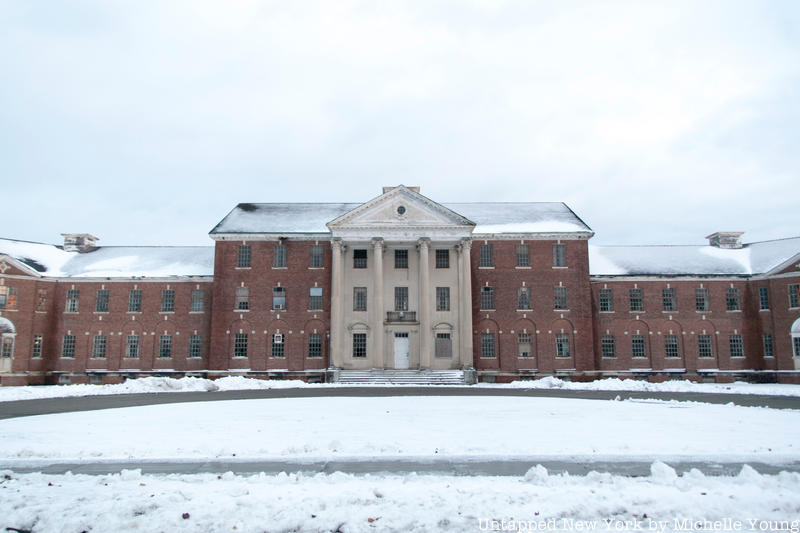 Shelton House
Shelton House
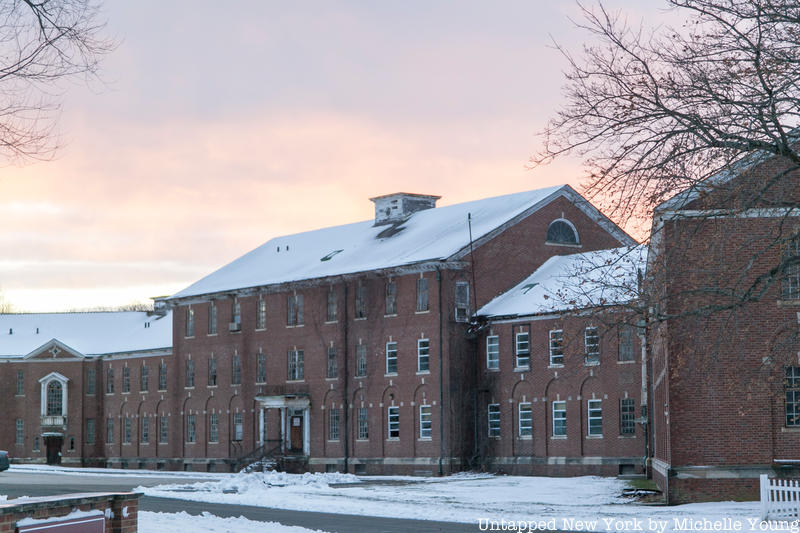 Rear side of Shelton House
Rear side of Shelton House
Possibly the creepiest remaining building is Stamford Hall, a building that once served as employee dorms. Its front portico, containing four Corinthian columns topped by a pediment, is in a serious state of decay but its original grandeur is still evident. Nearby on the same side of the road is Stratford Hall, once the library and a cafeteria for a time. And across the road from Stamford Hall is Plymouth Hall, which contained a gym, a chapel, and a bowling alley.
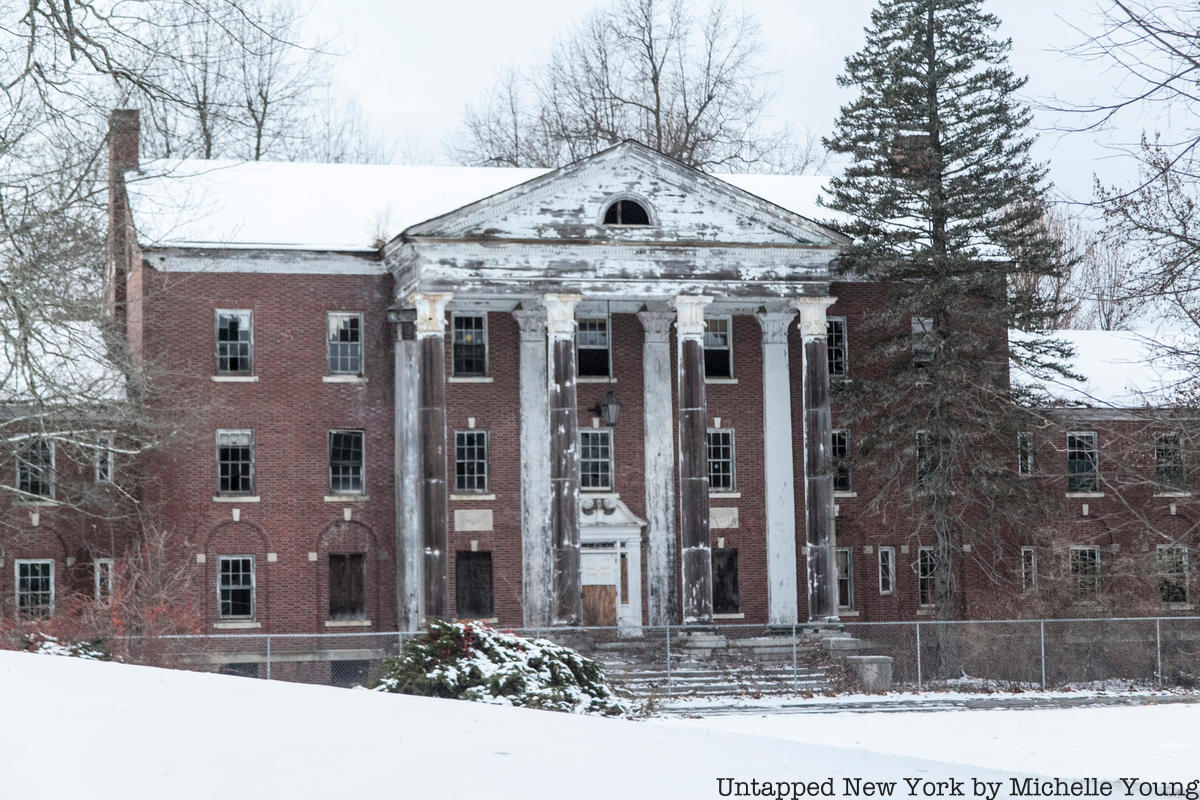 Stamford Hall
Stamford Hall
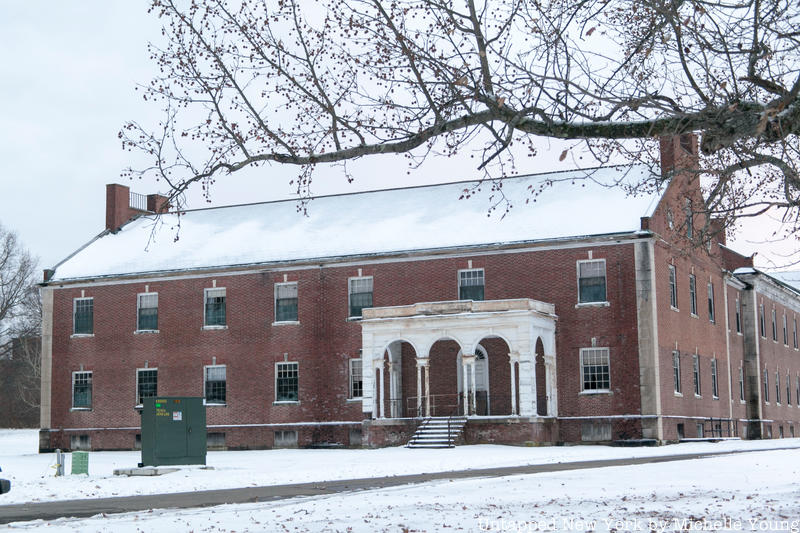 Stratford Hall
Stratford Hall
Like many other psychiatric facilities across the country, all the buildings were connected by tunnel. These tunnels made it efficient to transport patients between treatments and laboratories, confinement rooms, operating rooms, and in the unfortunate cases, the morgue. At its peak, the hospital could hold 4,000 patients, but the ratio of patient-to-doctor had always been an issue with the facility. Due to access issues, the tunnels were sealed or destroyed by the town starting in 2009.
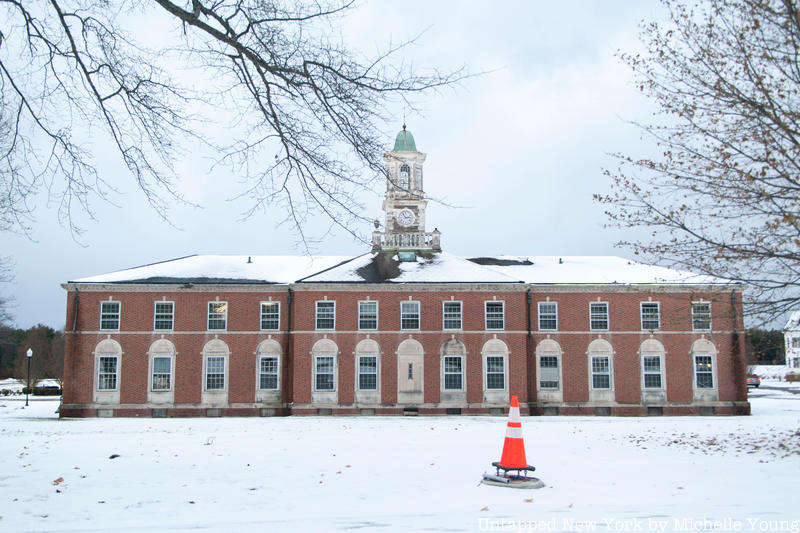 Newtown Hall was also an administration building
Newtown Hall was also an administration building
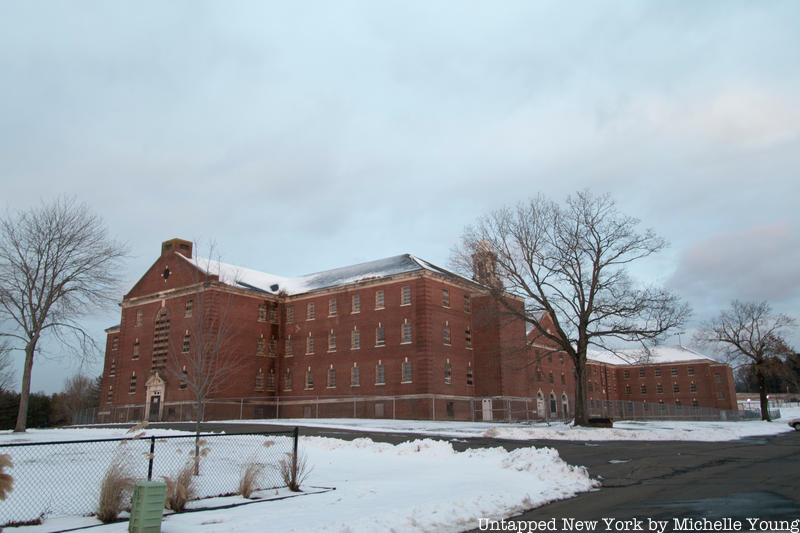
Deinstitutionalization, a major shift in approach to psychiatric care, began in the 1960s, and led to the widespread closure of many psychiatric institutions like Fairfield Hills State Hospital. After closure in 1995, the property lay vacant for more than a decade, and despite some reuse, many buildings remain untouched since its last residents were moved to other facilities. Walking trails and baseball fields have been newer additions, along with the construction of a few new buildings. The entire property is open to the public, and exploration of the grounds is encouraged, although any vacant buildings are off limits.
Next, check out 10 abandoned hospitals around NYC.





